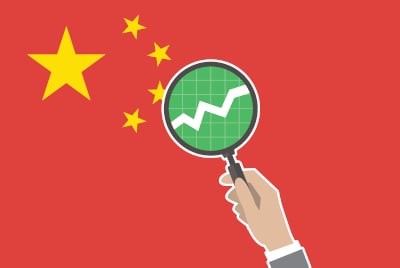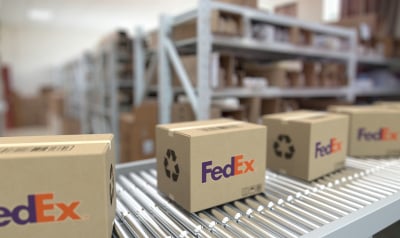Best in Manufacturing – December 08, 2020
Each Tuesday, we publish a list of top articles and other content related to manufacturing in areas like quality control, product development, supply chain management, sourcing, auditing and law.
1. Retails Sales Is Expected to Increase During the Holiday Season Despite Pandemic
 This year has been a tough year with COVID-19 raging over the world. The retail industry, especially physical stores, have experienced a huge drop in traffic and sales. Now that we finally have the holiday season at the end of the year, there is comforting news for the retail industry: sales are estimated to increase.
This year has been a tough year with COVID-19 raging over the world. The retail industry, especially physical stores, have experienced a huge drop in traffic and sales. Now that we finally have the holiday season at the end of the year, there is comforting news for the retail industry: sales are estimated to increase.
According to the National Retail Federation (NRF), holiday sales in November and December are expected to rise between 3.6 percent and 5.2 percent year-over-year. The total sale amount will be between $755.3 billion and $766.7 billion. Jack Kleinhenz, the chief economist at NRF, said:
Strong growth in retail sales during the last few months points to the resiliency of consumers even in this disruptive pandemic environment. Taking in all the evidence available, the U.S. economic recovery has progressed more quickly than generally expected.
However, the NRF pointed out that consumer confidence is still at a low level compared to the pre-pandemic period. But the good news is that figure is rising.
Consumers might shift more spending online
Ecommerce is an unexpected winner this year.
Under the stay-at-home policy, consumers have to place orders online and wait for delivery. This has a long-term impact on consumers’ shopping habits and may reshape it forever. Looking to avoid crowded stores, many consumers seem to shift more spending online.
The NRF said they projected the online sales and other non-store sales to increase between 20 percent and 30 percent. The total amount, compared to 2019’s $168.7 billion, might hike $202.5 billion and $218.4 billion.
Meanwhile, some retailers have also been urging shoppers to use services like curbside pickup to ease the stresses on their supply chains.
What’s more, an earlier NRF survey revealed that about 42 percent of the consumers had started their holiday shopping earlier this year. Retailers should start preparing earlier to make sure they are ready for the holiday rush.
Why is quality control even more important in holiday season
For businesses, this holiday season is a promotion chance that they can’t miss. If you are planning to boost your sales in the holiday season, you should prepare as soon as possible. Before putting your products on shelves, whether they are physical ones or digital ones, you must make sure the quality meets the standard.
A well-scheduled quality control plan can benefit your business in many aspects. First of all, of course, is to ensure your product quality. If the quality doesn’t meet the requirement, your products can be quickly abandoned by the market.
Secondly, it can ensure your time-to-market. If you schedule your quality control ahead of time, it will locate quality issues earlier. Then it enables you time to fix them on-site without having to return them back to the factory for re-working. It saves lead time and ensures your products can be on the shelf on time.
Additionally, it can help you build a healthy brand image. Consistent quality control on your supply chain is not only about inspections but it also involves actions like audits on suppliers. With a healthy supply chain, you will be able to produce products of stable and high quality. Thus, the consumers will consider your brand as reliable and form a virtuous circle.
All in all, quality control is the safeguard of your business. Having your quality process under control is the basis of making good products. Follow the link below to learn more about the retail sales trend in the holiday season.
Retail trade group says holiday sales could increase by as much as 5.2 percent, despite pandemic – Lauren Thoma, CNBC
2. Looking for recovery? Look to China.
For many businesses struggling seeking a  recovery, China might be their No.1 choice. According to a recent IHS Markit survey on more than 6,600 companies in 12 countries, Chinese companies have the highest recovery rate. Meanwhile, the recovery rate of the U.S. companies ranks second.
recovery, China might be their No.1 choice. According to a recent IHS Markit survey on more than 6,600 companies in 12 countries, Chinese companies have the highest recovery rate. Meanwhile, the recovery rate of the U.S. companies ranks second.
Also, HIS Markit pointed out that Chinese business recovery periods are usually two months while it’s three months for the U.S. businesses. For comparison, the average recovery period for 48 percent of companies globally is five months.
This time difference is causing pressure for some multinational companies with China operations – Chinese operations are “expected to carry a little more weight in the next fiscal year”. Daniel Zipser, the senior partner at McKinsey, said:
Many companies are looking to China now for growth. We’ve definitely seen an increase in hiring, ... seen companies turn their marketing initiatives toward China.
Moreover, the purchasing potential in China is growing with millions of consumers. The world’s second-largest economy has become increasingly important over the past years.
China will grow as the largest luxury market globally
Aside from the highest recovery rate, China also has millions of consumers who are eager to release their shopping desires. Let’s take the luxury market for example. The luxury market was hit hard this year and is expected to contract for the first time since 2009. But there’s an exception: the luxury market in China is booming, as Chinese consumers travel abroad less and spur more domestic sales instead.
As for last year, Chinese consumers have accounted for a third of luxury spending globally. According to a Bain&Co. report, China’s luxury market can overtake Europe and the Americas by 2025 and emerge as the largest luxury market globally.
Also, the report expects the growth in China to drive global luxury sales to return to the 2019 level by the end of 2022 or early 2023.
In addition, Bain’s report pointed out that ecommerce is getting more important for luxury brands. The sales from online this year have doubled from 2019’s 12 percent to 23 percent. Online shopping will become the largest distributor of luxury goods by 2025.
Federica Levato, a partner at Bain’s luxury goods vertical, said the general outlook is still promising:
Luxury brands have faced a year of tremendous shifts, but we believe that the industry will come out of the crisis with more purpose and more dynamism than ever before.
The RCEP will further consolidate Chinese manufacturing’s position
In early November, China and 14 other Asia-Pacific countries signed the Regional Comprehensive Economic Partnership (RCEP). This is currently the largest trade deal and will further consolidate Chinese manufacturing’s position.
China has been the world’s factory for years. However, the rising costs and increasing trade tension has pushed some of the businesses to relocate their supply chain out of China. But, even still manufacturing in Asia, businesses will face different tariff regulations and terms.
Once the deal comes into full effect, it will put China in the same category as other members of the trade agreement. It will remove potential restrictions on sourcing products from China. Michael Hirson at consultancy Eurasia Group said:
(RCEP) helps anchor China in regional supply chains, serving as a potential counterweight to disruptions from trade tensions and the pandemic.
More importantly, the RCEP will be the basis that pushes the achievement of other regional trade deals. Under a mass framework like RCEP, smaller deals like the China-Japan-South Korea will be easier to reach an agreement. Robin Xing, Morgan Stanley’s chief China economist, and his team said in a note:
These, if signed, would mark another move for China to mitigate risks from slowbalization, and sustain its advantages in global supply chain.
Follow the link below to learn more about why U.S. companies are looking at China.
U.S. companies with China operations look to the Asian giant for growth – Evelyn Cheng, CNBC
3. FedEx to install technology hubs throughout its supply chain
 Technology has never become more significant in our lives. Everything we know, from reading a book to launching a rocket, can be related to the use of technology. So is the supply chain. The supply chain connects the world and technology in the best way to allocate the resources.
Technology has never become more significant in our lives. Everything we know, from reading a book to launching a rocket, can be related to the use of technology. So is the supply chain. The supply chain connects the world and technology in the best way to allocate the resources.
In late November, FedEx announced it would install small technology hubs at locations throughout its network. The hubs will calculate the operations among FedEx’s network and handle the needs wisely. Rob Carter, CIO at FedEx, said:
We see a world coming where you need ultra-high availability, ultra-low latency compute – much closer to the action than what traditional data centers or even cloud data centers provide.
FedEx’s small technology hubs will be partnering with Dell Technologies and data center company Switch. Those partners will provide FedEx with facilities like delivery robot Roxo and tracking devices SenseAware ID.
FedEx’s first technology hub will be housed in an air-transport container in Memphis. The facility will be running in the first half of 2021. Other hubs will be deployed and set up in the future based on market needs.
Technology is essential for FedEx’s network
FedEx’s technology hubs will be small and modular data centers. They will be installed inside containers that look like typical FedEx air shipping containers. Rob Roy, CEO of Switch, explained:
We also designed them so they would fit inside what we traditionally call aircraft containers... These can be deployed all over the world – overnight, essentially – in our network, and they can be built quickly as compared to traditional brick-and-mortar data center implementations.
With those highly-automated and robot-friendly facilities, FedEx can make key package sortation decisions in less than four milliseconds of response time. Additionally, FedEx Freight has installed radio frequency identification sensors on pallets to better identify the package. Meanwhile, FedEx Express will track the SenseAware ID sensors attached to the package.
In fact, FedEx’s small technology hubs will not be installed in every individual center. Instead, they will locate at a single, nearby location for better coverage.
Tech devices among FedEx’s supply chain
Aside from applying technologies to its supply chain, FedEx is also using tech devices among its supply chain to upgrade its delivery.
In the distribution centers, FedEx has installed robot arms to do the most repeatable jobs. In its Memphis hub, there are now 4 robot arms working to sort and move packages from the bin to the conveyor belt. The arms can handle 1,200 to 1,300 packages per hour and significantly save human resources to do more meaningful works.
On the way to deliver packages, FedEx is now trying to have robots do the tasks as well. FedEx’s delivery robot is called Roxo. It’s a 450 pounds machine with six wheels. It can carry up to 100 pounds cargo and deliver within its eight-mile range. It has Lidar sensors to help it detect people in its path. FedEx Office CEO Brian Philips said:
It can climb the curb, it can go up the sidewalk, and it can go up to the porch. …The economics of the bot are such that it can stationed at the customers’ site,” Philips said. “It can be sent out on a mission at a moment’s notice.
Moreover, FedEx is also testing drones to finish the last-mile-delivery. But regulations for drone delivery are much more complex than that for ground-walking robots. It might take longer times for consumers to meet drone delivery services.
Follow the link below to learn more about FedEx’s small technology hubs.
FedEx plans to house technology hubs throughout its network. Here's what they'll do. – Max Garland, Commercial Appeal
We’re constantly scanning the web for top manufacturing stories and news. If you’d like to submit an article for consideration for our weekly Best in Manufacturing, send us a message and let us know







